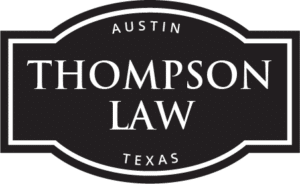There are two main types of divorce in Texas: Uncontested Divorce and Contested Divorce.
What’s the Difference Between Contested Divorce and Uncontested Divorce? This is one of the most common questions I get as a divorce lawyer in Austin, TX.
Contested Divorce
A Contested Divorce means that you and your spouse can’t agree about one or more key issues. Sometimes, agreement on all issues is impossible despite your best efforts, and a Contested Divorce is necessary to protect you, your children, or your property.
You and your spouse may disagree about issues related to children, such as primary custody, visitation, child support, or medical or educational issues. Or, you and your spouse may disagree about financial or property issues, such as real estate, retirement accounts, spousal support or alimony, business ownership, or other complex property division issues.
An experienced Austin divorce lawyer attorney in Austin, TX can help to protect your family and property in a Contested Divorce.
Some Contested Divorces can be resolved relatively quickly, easily, and affordably. If you and your spouse can agree on most issues, then you may be able to resolve areas of disagreement through negotiation or mediation without a courtroom fight.
In other Contested Divorces, it’s necessary for a judge to resolve areas of disagreement in court because you and your spouse are unable to reach agreement through informal processes, such as negotiation or mediation.
In my own legal practice as an Austin divorce lawyer, I find that agreement is usually faster, emotionally easier, and less expensive than disagreement. However, total agreement is not always possible, and I fiercely defend my clients’ rights in court when necessary as a divorce attorney in Austin, TX.
Uncontested Divorce
In an Uncontested Divorce, you and your spouse retain control over your parenting and property by agreeing on all the terms of your divorce.
Oftentimes, couples will agree upon a parenting schedule and agree upon property division before even speaking with Austin divorce lawyers.
You may not believe that you and your spouse can agree on everything, but I have found, as a divorce lawyer in Austin, TX, that agreement on all issues can often be reached through informal negotiation or mediation even if you and your spouse are unable to reach agreement working without the help of divorce professionals.
If you and your spouse are able to agree on most major issues – such as a parenting plan and property division – then an experienced divorce lawyer can usually help to finalize your divorce quickly.
How much does a Contested Divorce Cost? How much does a Simple Divorce Cost?
An Uncontested Divorce typically costs much less than a Contested Divorce. The reason is simple: Paying a divorce lawyer to draft the paperwork needed to finalize your agreed divorce is less expensive than paying a divorce attorney to fight your spouse in court.
Like most divorce lawyers in Austin, TX, I charge on an hourly basis. As a result, the more you and your spouse can work together and reach agreement on your own, the less your divorce will cost. In this way, the cost of your Uncontested Divorce is largely up to you and your spouse, rather than the divorce lawyers.
It is common for only one spouse to be represented by a divorce lawyer in an Uncontested Divorce in Austin, TX. An experienced Uncontested Divorce lawyer can take you through the steps to keep your costs as low as possible, though divorce is expensive.
Steps in a Contested Divorce vs. Steps in an Uncontested Divorce
The main difference between a Contested Divorce and an Uncontested Divorce is that you will have a courtroom fight in most Contested Divorces. As a result, a Contested Divorce involves more steps, and each step requires more time, effort, and money.
Step One: A divorce lawyer files an Original Petition for Divorce with the court, which starts the divorce process. Divorce lawyers in Austin, TX usually call this document a Divorce Petition. A Divorce Petition is filed in both Contested Divorce and Uncontested Divorce cases. It includes information about you, your spouse, and the marriage. The Divorce Petition also identifies issues related to child custody, child support, spousal support, separate property, and community property.
Step Two: The spouse who files the Divorce Petition is required to “serve” the other spouse with a copy of the Divorce Petition. In a Contested Divorce, this is usually done through formal service of process, meaning that a sheriff or process server hand delivers the Divorce Petition to your spouse. In an Uncontested Divorce, an experienced Austin divorce lawyer can often save you time and money by getting around the service requirement through other informal methods.
Step Three: The spouse who is served with the Divorce Petition is required to file a legal document called an “Answer” within a certain time period. A divorce attorney will write the Answer for you and make sure that it is filed with the Court by the deadline. An Answer is filed in both Contested Divorce and Uncontested Divorce Cases.
However, in Contested Divorces (unlike Uncontested Divorces), the spouse required to file an Answer will often file a Counterpetition as well. A Counterpetition is just like a Divorce Petition. If your spouse filed for divorce, then the Counterpetition is your first opportunity to tell the Court how you believe issues related to children and property should be resolved, and a divorce lawyer can help protect your rights by filing a Counterpetition if your spouse is seeking divorce.
Step Four: In Contested Divorces, discovery is a formal process the divorce lawyer uses to get information and evidence from your spouse using tools established in the Texas Rules of Civil Procedure. The purpose of discovery is to prepare for trial and prevent surprises later, but it is an expensive and intrusive process, because the information and evidence sought is often large in volume and personal in nature.
In Uncontested Divorces, spouses often agree to exchange a more limited amount of information and evidence through informal processes with the help of an experienced divorce lawyer, saving both time and money when possible.
Step Five: In a Contested Divorce, you and your spouse will go to Court for a Temporary Orders hearing. At this hearing, a judge will make the rules that you and your spouse must follow during the divorce case, such as the use of bank accounts and credit cards, the amount of temporary spousal support or child support to award, where the spouses and children will live, and how parenting time will be divided. An experienced and aggressive divorce attorney can make all the difference at a Temporary Orders hearing in a Contested Divorce.
In an Uncontested Divorce, a Temporary Orders hearing is usually unnecessary, because you and your spouse can agree on the rules to follow during the divorce case.
Step Six: In a Contested Divorce, you and your spouse will go to court a second time for a Final Orders hearing, which is the same thing as a trial, usually without a jury. The purpose of a Final Orders hearing is to finalize your divorce by getting a judge to decide contested issues related to children or property and sign a formal court order, known as a Final Decree of Divorce (or Divorce Decree), which contains all the child- and property-related terms of your divorce.
In an Uncontested Divorce, there is no Final Orders hearing; instead, both parties agree on child- and property-related issues, your divorce lawyer writes an Agreed Final Decree of Divorce, and a judge signs the order without the need for a Final Orders Hearing.
Resolve your divorce out of court if possible
Contested Divorces typically last longer, cost more money, and take a larger emotional toll on both you and your spouse than Uncontested Divorces, which are typically faster, cheaper, and less painful.
An experienced divorce lawyer in Austin, TX can help to facilitate an Uncontested Divorce in many cases, but agreement is not always possible. If you believe that your divorce is (or may become) a Contested Divorce, then an aggressive divorce attorney can help protect you, your family, and your property in court when agreement becomes impossible.



